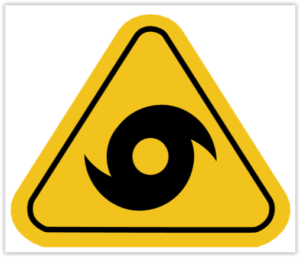Storm on the Horizon
VITAL STEPS TO PREPARE YOUR BUILDING FOR HURRICANE SEASON
 It’s been two years since Hurricane Harvey devastated Texas in the worst disaster in the state’s history. In the first 24 hours, two feet of rain fell, giving way to an unprecedented 1,000-year flood event. As one of the costliest hurricanes on record — second only to Hurricane Katrina in 2005 — Hurricane Harvey required $125 billion in federal relief for repairs and assistance.
It’s been two years since Hurricane Harvey devastated Texas in the worst disaster in the state’s history. In the first 24 hours, two feet of rain fell, giving way to an unprecedented 1,000-year flood event. As one of the costliest hurricanes on record — second only to Hurricane Katrina in 2005 — Hurricane Harvey required $125 billion in federal relief for repairs and assistance.
We find ourselves at the beginning of hurricane season yet again. Earlier this spring, the Colorado State University (CSU) Tropical Meteorology Project and AccuWeather predicted we’ll see between five and seven hurricanes this season. But as AccuWeather Atlantic hurricane expert Dan Kottlowski noted when the predictions were released, “It only takes one.”
Historically, predictions from CSU and AccuWeather tend to be fairly accurate. As hurricane seasons grow steadily worse each year, it’s crucial for property managers and building owners to be ready for major storms. Here are three questions to ask yourself before the rain starts to fall.
What’s the Risk?
The four biggest threats in a hurricane are high winds, storm surges, torrential rains, and tornadoes. Do some research to address the biggest threats to your building. Have a licensed inspector come out and check your building for threats, which may include repairing the roof, retrofitting doors and windows, or removing trees that could fall in high winds. You can also check your building’s flood risk on the FEMA website at MSC.Fema.gov/portal/home.
What Does Your Insurance Say?
Building owners should review and clarify their insurance policies well before any disaster can take place. Make sure you know what you’re not covered for and prepare to address those areas if need be. Now might also be a good time to update photos and record the current state of your building, in case you need to measure the damage after a storm.
Who You Gonna Call?
Maintaining open channels of communication before, during, and after a storm is crucial for getting your building up and running again as soon as possible. Collect contact information for staff members and key tenants, including phone numbers, addresses, and emergency contacts. Then create a communication plan to determine how important information will be relayed, be it through phone calls, text messages, email, or social media.
You also want to have a list of consultants or contractors that you can rely on to help with disaster recovery. This includes flood water remediation, electrical contractors, roofing or waterproofing contractors, and other persons (yes, IAQ consultants too) who can help ensure your building is safe for occupants should it suffer damage during a bad storm. If possible, establish a contract with these companies so they are guaranteed to come out after a storm. The last thing you want is to have your flooded building at the bottom of a long waiting list.
Building Air Quality does not offer these kinds of service contracts. However, it is possible for you to arrange for your building to be at the top of the inspection list should you suffer from any hurricane damage. Just give us a call in advance at 866-367-1177.
In preparation for hurricane season, Building Air Quality has also created a valuable infographic to help your staff quickly respond to water damage in your building. To receive a free copy of this infographic, go to BAQ1.com/WaterDamage.
